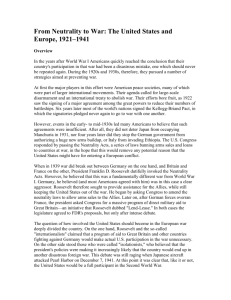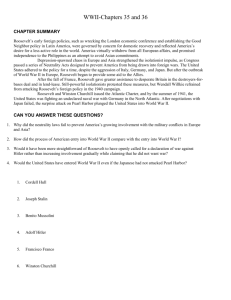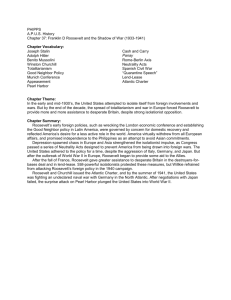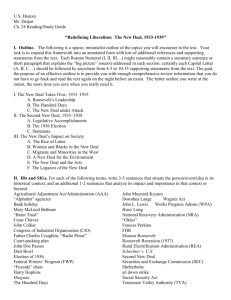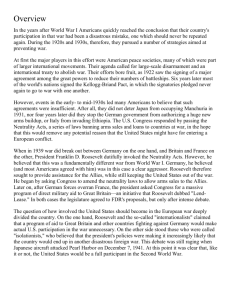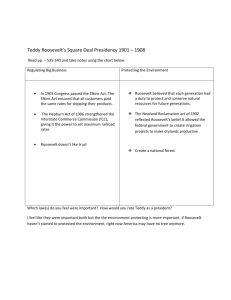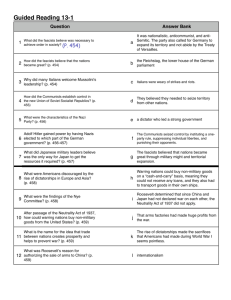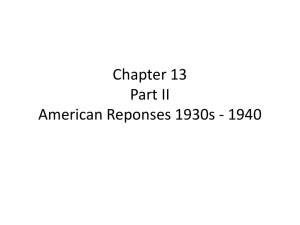Essays Berkin Chapter 23
advertisement
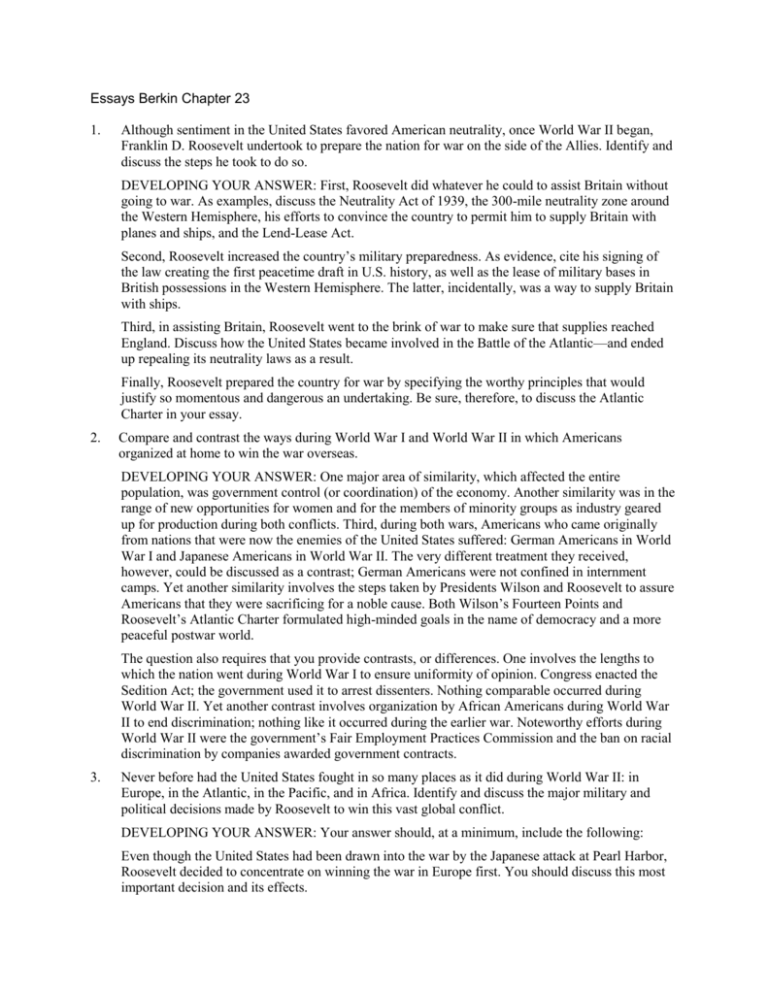
Essays Berkin Chapter 23 1. Although sentiment in the United States favored American neutrality, once World War II began, Franklin D. Roosevelt undertook to prepare the nation for war on the side of the Allies. Identify and discuss the steps he took to do so. DEVELOPING YOUR ANSWER: First, Roosevelt did whatever he could to assist Britain without going to war. As examples, discuss the Neutrality Act of 1939, the 300-mile neutrality zone around the Western Hemisphere, his efforts to convince the country to permit him to supply Britain with planes and ships, and the Lend-Lease Act. Second, Roosevelt increased the country’s military preparedness. As evidence, cite his signing of the law creating the first peacetime draft in U.S. history, as well as the lease of military bases in British possessions in the Western Hemisphere. The latter, incidentally, was a way to supply Britain with ships. Third, in assisting Britain, Roosevelt went to the brink of war to make sure that supplies reached England. Discuss how the United States became involved in the Battle of the Atlantic—and ended up repealing its neutrality laws as a result. Finally, Roosevelt prepared the country for war by specifying the worthy principles that would justify so momentous and dangerous an undertaking. Be sure, therefore, to discuss the Atlantic Charter in your essay. 2. Compare and contrast the ways during World War I and World War II in which Americans organized at home to win the war overseas. DEVELOPING YOUR ANSWER: One major area of similarity, which affected the entire population, was government control (or coordination) of the economy. Another similarity was in the range of new opportunities for women and for the members of minority groups as industry geared up for production during both conflicts. Third, during both wars, Americans who came originally from nations that were now the enemies of the United States suffered: German Americans in World War I and Japanese Americans in World War II. The very different treatment they received, however, could be discussed as a contrast; German Americans were not confined in internment camps. Yet another similarity involves the steps taken by Presidents Wilson and Roosevelt to assure Americans that they were sacrificing for a noble cause. Both Wilson’s Fourteen Points and Roosevelt’s Atlantic Charter formulated high-minded goals in the name of democracy and a more peaceful postwar world. The question also requires that you provide contrasts, or differences. One involves the lengths to which the nation went during World War I to ensure uniformity of opinion. Congress enacted the Sedition Act; the government used it to arrest dissenters. Nothing comparable occurred during World War II. Yet another contrast involves organization by African Americans during World War II to end discrimination; nothing like it occurred during the earlier war. Noteworthy efforts during World War II were the government’s Fair Employment Practices Commission and the ban on racial discrimination by companies awarded government contracts. 3. Never before had the United States fought in so many places as it did during World War II: in Europe, in the Atlantic, in the Pacific, and in Africa. Identify and discuss the major military and political decisions made by Roosevelt to win this vast global conflict. DEVELOPING YOUR ANSWER: Your answer should, at a minimum, include the following: Even though the United States had been drawn into the war by the Japanese attack at Pearl Harbor, Roosevelt decided to concentrate on winning the war in Europe first. You should discuss this most important decision and its effects. To win the war in Europe, Roosevelt provided tremendous support to the Allies. The invasion of North Africa and holding off on the invasion of Western Europe accommodated Britain’s wishes. As Russia’s ally, the United States provided the Soviet Union with necessary supplies and acquiesced at Yalta to Soviet control over Eastern Europe. To overwhelm the Nazis, Roosevelt accepted the concept of squeezing Germany from two sides. The result was the second front, opened on D-Day with the great Allied invasion across the English Channel. With the Russians advancing from the east and the other Allies from the west, Germany would be assaulted from both sides and ultimately forced to surrender. To avoid getting bogged down in the Pacific islands, which the Japanese counted on, the United States decided to attack only some and to bypass the others. Finally, the United States undertook to develop the “ultimate” weapon. The atomic bomb resulted.
